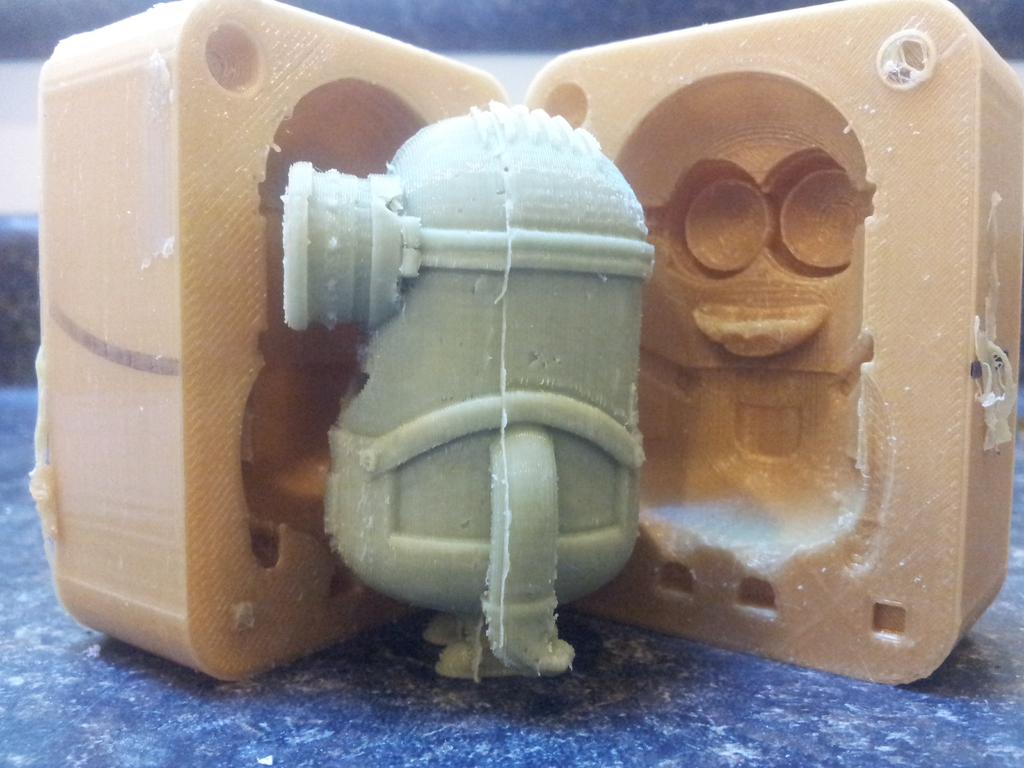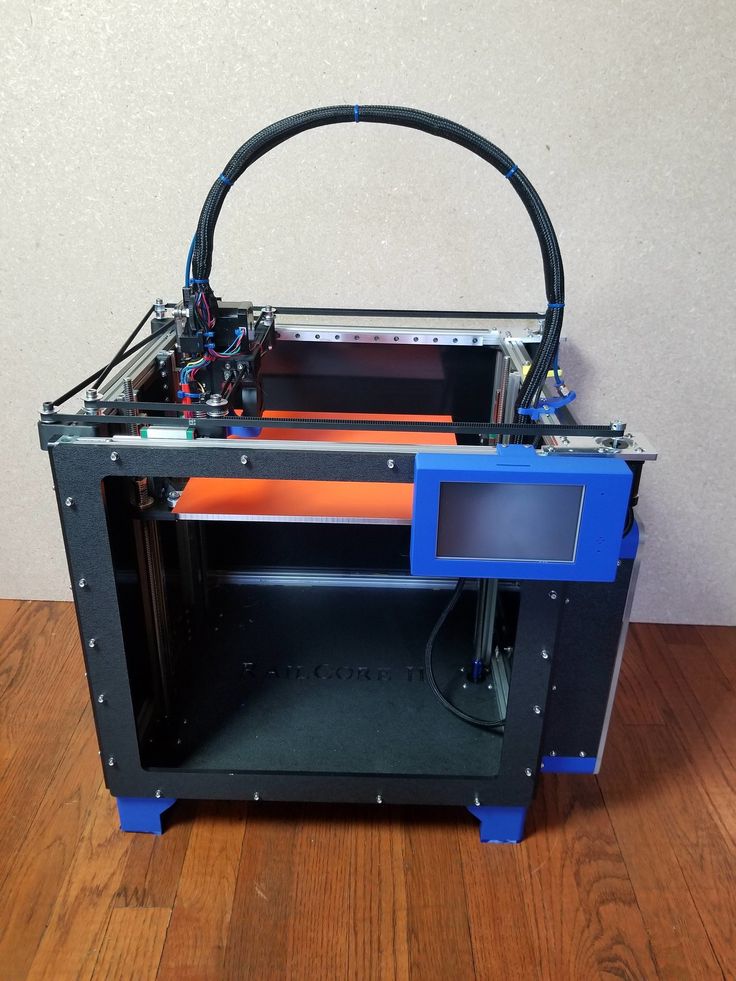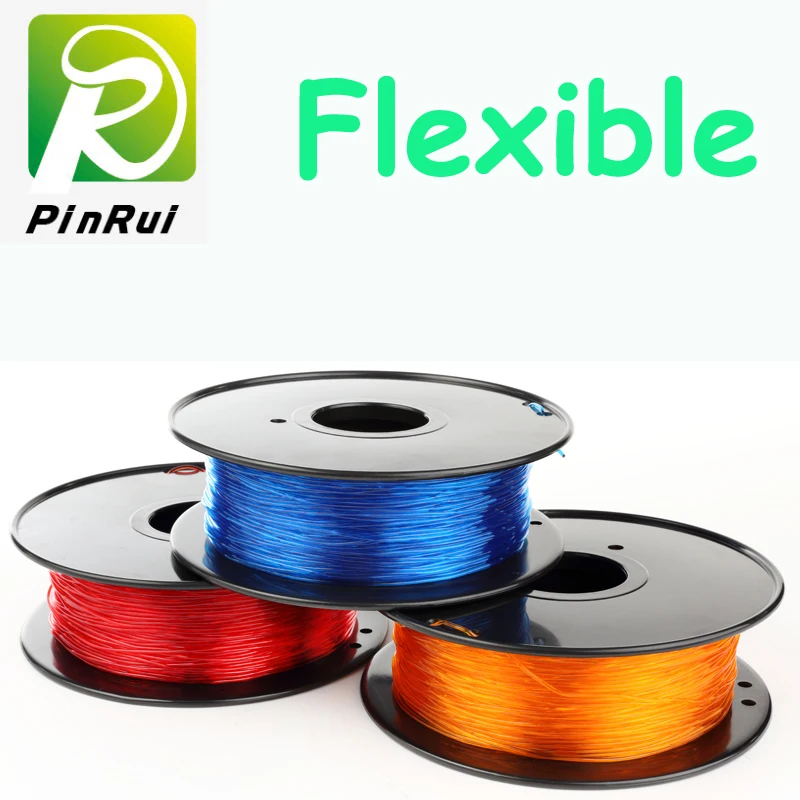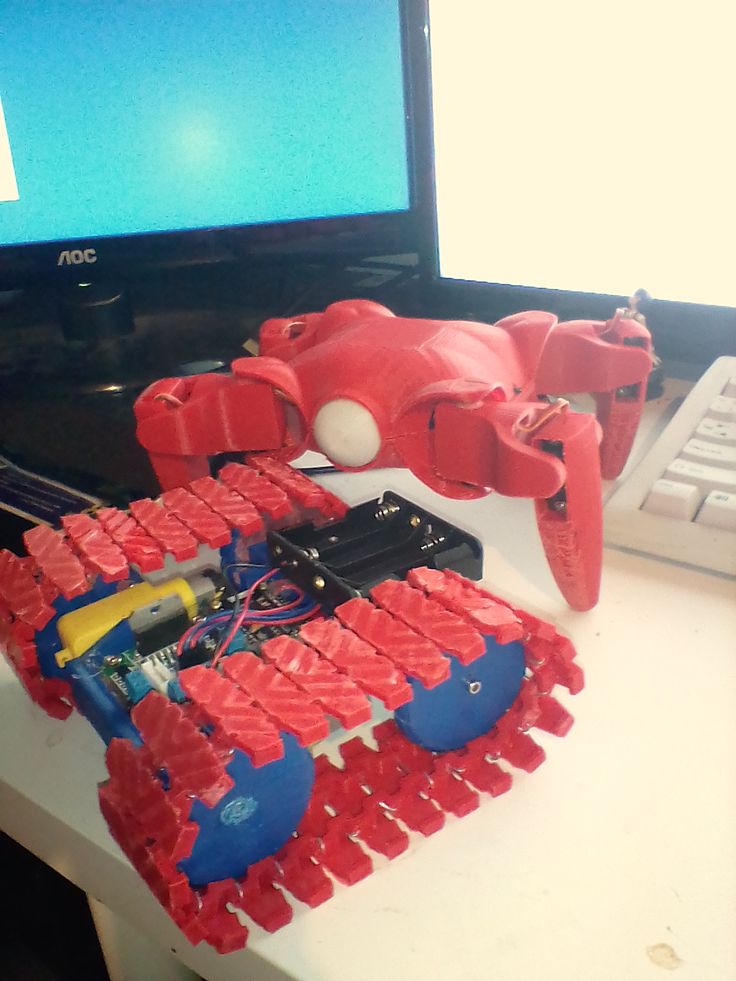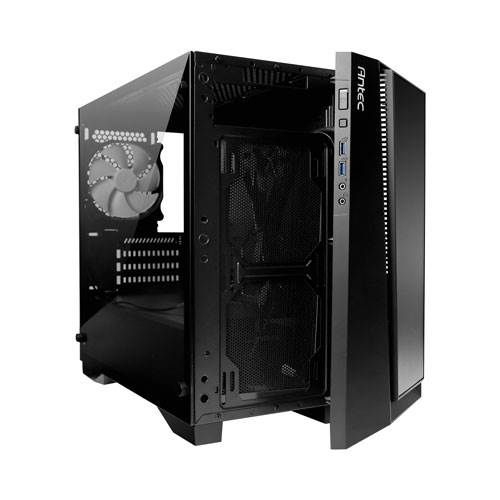3D printer filament non toxic
Eco-friendly 3D filament guide - what are the possibilities and innovations
What is eco-friendly 3D filament?
Eco-friendly 3D filament is a new alternative to the classic plastic filament. 3D printing requires a lot of energy and often uses non-biodegradable materials. For example, ABS is made from petroleum. It is one of the most common 3D printing materials when it comes to filament extrusion.
However, innovations now offer the opportunity to 3D print ecologically and responsibly at a lower cost. Many biodegradable filaments, made from recycled materials, have been developed to be environmentally friendly and have become alternatives to plastic filaments.
By incorporating a biodegradable plastic base (in the form of fibers or powders), it is possible to create filaments that include a high percentage of organic material.
3D printing from recycled plastics
How to make 3D printing materials from plastic waste
Thanks to Tyler McNaney’s Filabot, or MIT’s Recyclebot, it is possible to create ecological filament at home by recycling plastic waste. These machines turn waste into a 3D filament that a 3D printer can use.
A bottle of milk recycled by the Filabot converts into 2.5 meters of 3D filament.
First, the machine crushes recyclable plastic waste (bottles, boxes, etc.) to transform it into plastic pellets (or granules). The recycling machine then heats and extrudes these pellets into the shape of filament. The filament is then wrapped around a spool so that it can be reused again by a 3D printer.
Reuse 3D printed objects and plastic print waste
3D printing requires patience and involves a lot of testing to perfectly configure a 3D printer and produce quality 3D models. Many of these tests result in print fails, extra material, supports, or simply old pieces that are no longer useful.
Plastic waste extruders such as the Filabot or ProtoCycler can recycle this plastic waste.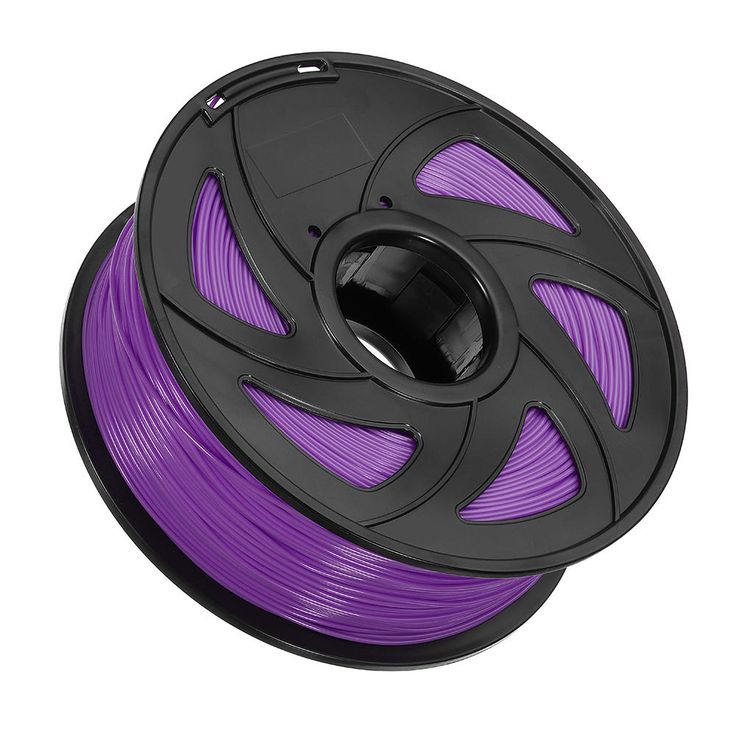 This innovation, with its ecological aspect, also represents a big cost saving for the users who can reduce their 3D filament expenses.
This innovation, with its ecological aspect, also represents a big cost saving for the users who can reduce their 3D filament expenses.
Buy 3D filament made from recycled materials
The Dutch startup Refil sells 3D filament made from two recycled plastics, ABS and PET. These two plastics mainly come from plastic bottles and car dashboards. This award-winning innovation is called Refilament.
According to Refil’s co-founder Casper van der Meer, the recycled filament (free of toxic additives), boasts the same features as ordinary filament and is available at a price between 30 and 40 dollars a spool.
Black ABS 3D filament produced by Refil from old car dashboards.3D printing with biodegradable 3D filament
PLA, a cornstarch-based 3D printing material
With ABS, PLA is the most commonly used 3D printing material when it comes to filament deposition.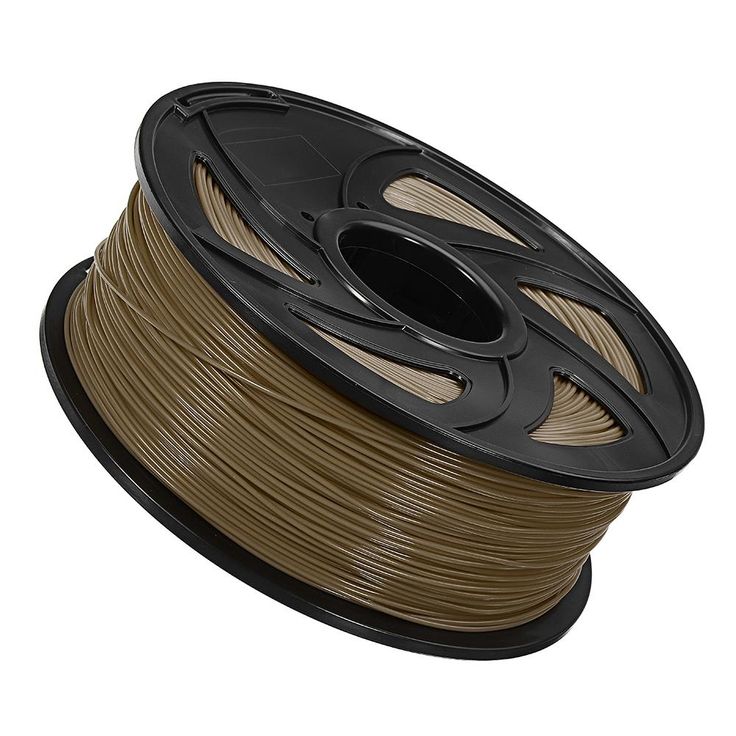
PLA is made from cornstarch. It is compatible with most 3D printers using extrusion 3D printing technology.
Unlike ABS, PLA is a biodegradable material. Thanks to its non-toxicity, PLA can also be used to 3D print objects that will be in contact with food.
The main weakness of PLA is its high sensitivity to moisture and its tendency to break rather than bend. It makes it more difficult to handle than ABS.
Green and blue frogs 3D printed from PLA.Sustainable 3D printing: paper, an alternative to plastic
Mcor Technologies (now CleanGreen 3D) is a 3D printer manufacturer that has successfully made 3D printing material from paper. Their Laminar 3D printing technology successively cuts sheets of paper and glues them onto each other to 3D print an object.
Paper is not as environmentally friendly as PLA, but it is a serious alternative to more toxic materials. It also costs much less: a ton of paper costs around €1,300 while a ton of PLA costs between €5,000 and €10,000.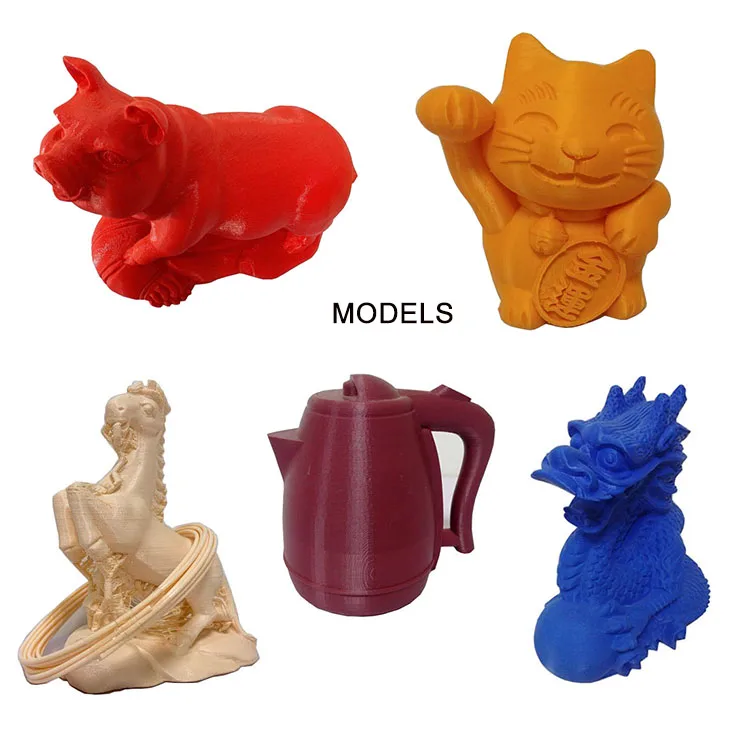
Plant-based 3D printing materials
Many plant-based filaments have been developed, such as the soy-based FilaSoy or SeaWeed, a material made from seaweed. The Algix from 3DFuel is also available and is made from nuisance algae.
Wood is also a material that is used to make natural 3D filaments. For example, Laywood is made up of 40% of wood, which gives it a touch and appearance similar to wood.
ColorFabb has even developed two 100% organic filaments: the WoodFill made up of 70% PLA and 30% wood fiber, and the BambooFill, half bamboo, and half PLA.
Finally, oysters and coconuts have also been experimentally used to create new 3D filaments.
A small 3D printed elephant made with ColorFabb’s Woodfill material.3D printing with recycled building materials
3D printed houses made from recycled concrete
The Chinese company WinSun Decoration Design Engineering received attention in 2014 by 3D printing ten houses in less than 24 hours.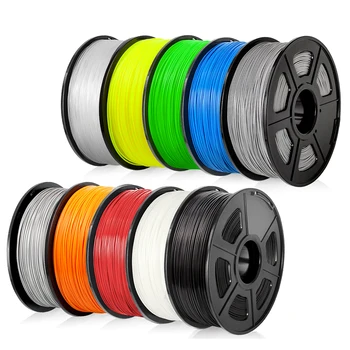 These were 3D printed from a mix of cement, industrial waste, and recycled fiberglass. In 2015, they did it again, this time with a four-story building, and also succeeded in less than 24 hours.
These were 3D printed from a mix of cement, industrial waste, and recycled fiberglass. In 2015, they did it again, this time with a four-story building, and also succeeded in less than 24 hours.
In January 2018, the same company 3D printed bus stops at Fengjing Town in Shanghai.
In Amsterdam, a canal house was also 3D printed by DUS Architects in 2016. This house, designed in partnership with Henkel, is 3D printed with bioplastics. It consists of 80% ecological materials.
Examples: two innovative projects to recycle plastic waste
An eco-friendly 3D printer launched by Coca-Cola, 3D Systems, and will.i.am
will.i.am, who was previously creative director of the 3D printer manufacturer 3D Systems, had teamed up with Coca-Cola to create Ekocycle.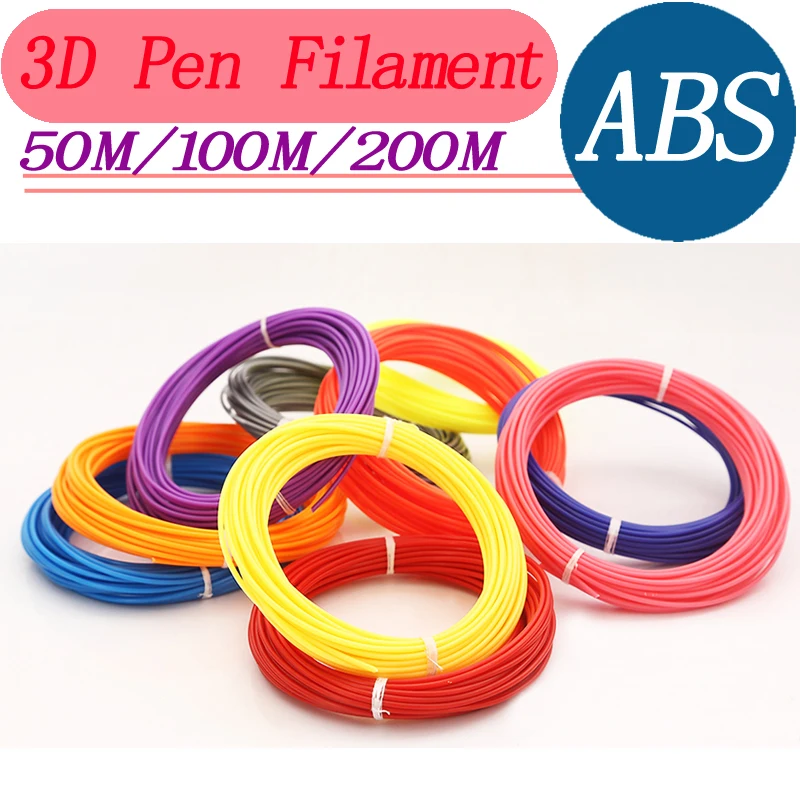 The Ekocycle is a 3D printer that uses a 3D filament, of which 25% is made from recycled plastic bottles.
The Ekocycle is a 3D printer that uses a 3D filament, of which 25% is made from recycled plastic bottles.
“Ekocycle’s goal is to collaborate with the world’s most influential brands and use technology, art, and fashion to change an entire culture. It’s the beginning of a more sustainable lifestyle through 3D printing. Waste is waste only if we waste it.”
will.i.am
Ekocycle will be able to 3D print objects with a build volume of one hundred cubic centimeters, with a minimum layer thickness of 70 microns.
Three 500ml Coca-Cola bottles are needed to make one Ekocycle cartridge. The available colors Coca-Cola’s emblematic colors: red, black, and white.
will.i.am, a founding member of the Black Eyed Peas and 3D Systems’ previous artistic director, presenting the Ekocycle eco-friendly 3D printer.Clean beaches and 3D printed souvenirs of the sea
In 2014, two Swiss entrepreneurs, Jennifer Gadient and Fabian Wyss, launched the Seafood Project.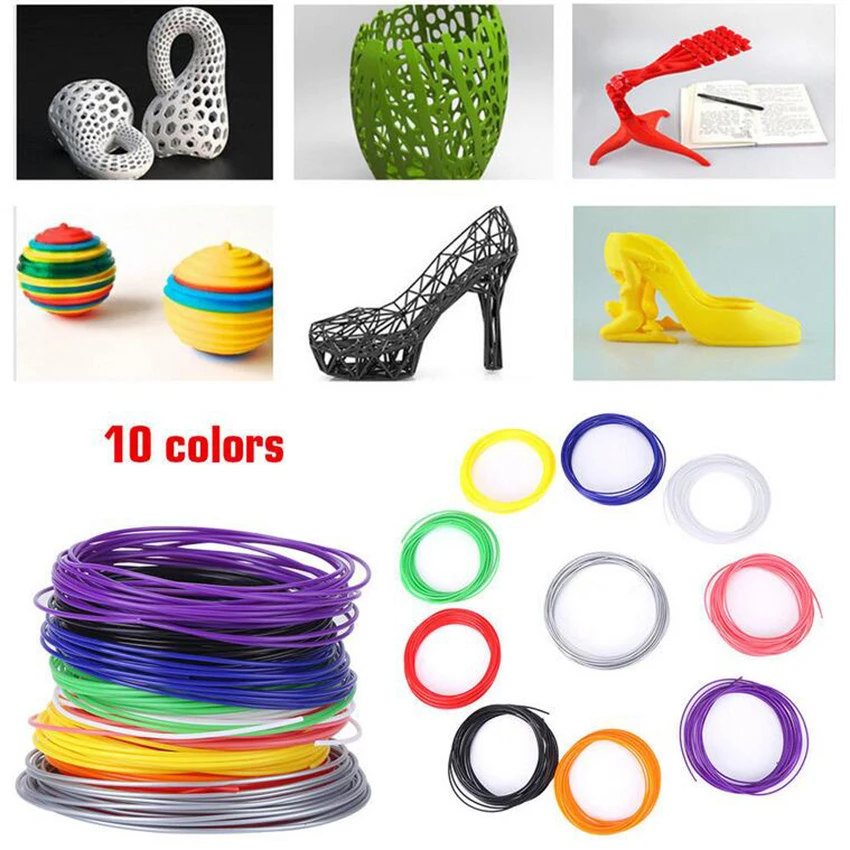 This project aimed to clean the beaches of France, Spain, and Morocco by recycling all plastic waste into 3D printed objects.
This project aimed to clean the beaches of France, Spain, and Morocco by recycling all plastic waste into 3D printed objects.
The couple left France in October 2014 and drove down to Morocco in their van, in which they had all the necessary equipment for 3D printing.
On the beaches, they recovered plugs, bottles, and other plastic waste. With the help of an extruder and a shredder, they transformed this waste into 3D filament. They then 3D printed objects with an Ultimaker 3D printer and sold them on their website.
Picture of Jennifer Gadient and Fabian Wyss in front of their van, equipped with a 3D printer to recycle plastic waste from beaches.Are 3D Printer Filament Fumes Toxic? PLA, ABS & Safety Tips – 3D Printerly
There’s no doubt about the excellence of what 3D printers have brought to the world but one crucial thought comes to mind when the danger that these machines impose is in question. This article concentrates on acknowledging whether filaments used for 3D printing are toxic to health or not.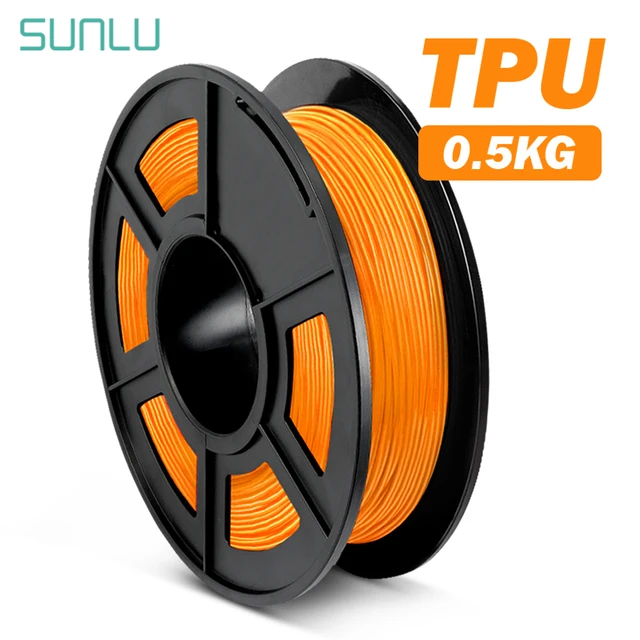
3D printer filament fumes are toxic when melted at very high temperatures so the lower the temperature, generally the less toxic a 3D printer filament is. PLA is known as the least toxic filament, while Nylon is one of the most toxic filaments out there. You can reduce toxicity with an enclosure and air purifier.
To put it into layman terms, 3D printing is a procedure that involves thermal decomposition. This means that when the printing filament is melted at an exceeding amount of temperature, it’s bound to give off toxic fumes and release volatile compounds.
These bi-products therefore, do pose a health concern towards users. The intensity with which they can prove to be harmful, however, varies due to a number of reasons which will be discussed later on in this article.
How Can 3D Printer Filament Spoil Our Health?
The rate at which the thermoplastics start emitting dangerous particles is directly proportional to temperature. Higher temperature means that a higher amount of these threatening particles is emitted and a higher risk is involved.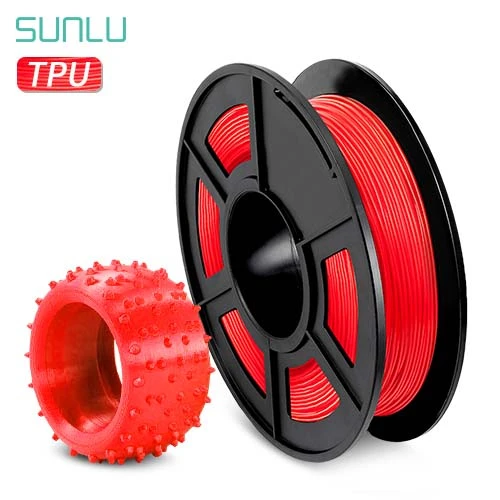
Side by side, it is to be pointed out that the actual toxicity may vary from filament to filament. Some are more noxious, while others are less.
According to a study conducted by ACS Publications, some filaments release Styrene which is assumed to be a carcinogen. Styrene is subject to cause unconsciousness, cephalgia, and weariness.
In addition, the toxic fumes released from the melted plastic, often tend to target the respiratory system and possess the capacity of causing direct damage to the lungs. Moreover, there’s also a risk present for cardiovascular diseases as toxins enter the bloodstream.
Inhaling the particles given off by thermoplastics aggravate the chance of asthma furthermore.
To look into the matter closely, we need to understand what precisely is the danger and in what form. Not only this, but general information on the most popular printing filaments and their safety concerns is about to come next as well.
The Toxicity Explained
Better understanding the concept of why thermoplastics can be fatal for human life will help decipher the whole phenomenon.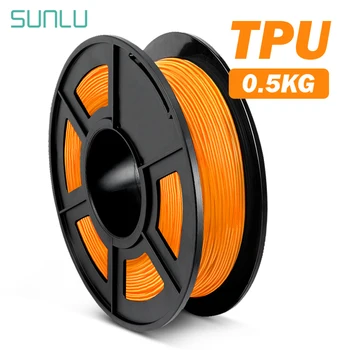
Basically, a 3D printer works wonders printing layer over layer, but in doing so, it pollutes the air. How it does that, is primary for us to focus on.
When thermoplastics are melted at high temperatures, it starts emitting particles that can have negative consequences on the indoor quality of air, therefore causing air pollution.
Pinpointing this form of pollution, it has been revealed that there are two main types of particles that come into being during printing:
- Ultrafine Particles (UFPs)
- Volatile Organic Compounds (VOCs)
Ultrafine particles have a diameter of up to 0.1 µm. These can enter the body with ease and target the lung cells specifically. There are also a number of other health risks concerned with the intrusion of UFPs in the human body such as various cardiovascular disorders and asthma.
Volatile organic compounds such as Styrene and Benzene also put the users of 3D printers at risk since they have a connection with cancer.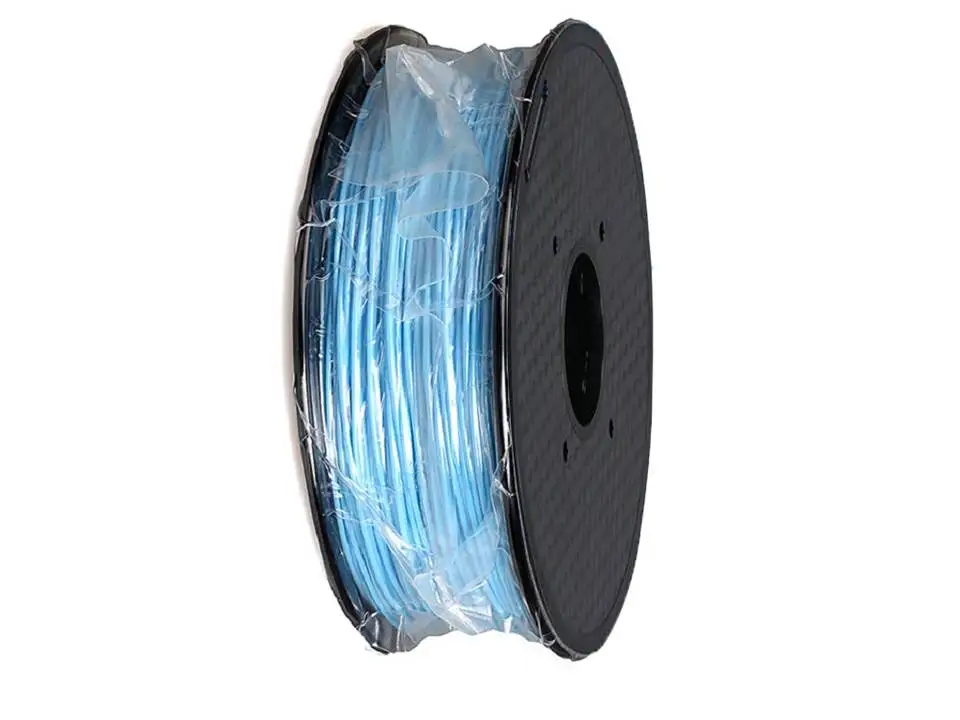 The Environmental Protection Administration (EPA) also categorizes VOCs as agents of toxicity.
The Environmental Protection Administration (EPA) also categorizes VOCs as agents of toxicity.
Research conducted by the Georgia Institute of Technology in collaboration with Weizmann Institute of Science in Israel took measures to show beyond doubt, the negative impact of particle emission from 3D printers.
For this purpose, they made the concentration of particles coming from 3D printers to come in contact with human respiratory cells and rat immune system cells. They found out that the particles provoked a toxic response and influenced the cell’s potentiality.
Talking about the filaments in specific, the researchers took PLA and ABS; two of the most common 3D printing filaments out there. They reported that ABS proved to be more fatal than PLA.
The reason for this is because of the fact that more emissions are produced as the temperature rises for the filaments to melt. Since ABS is a printing material that takes ample number of degrees to melt, it’s liable to give off more fumes than PLA which melts at a lower temperature.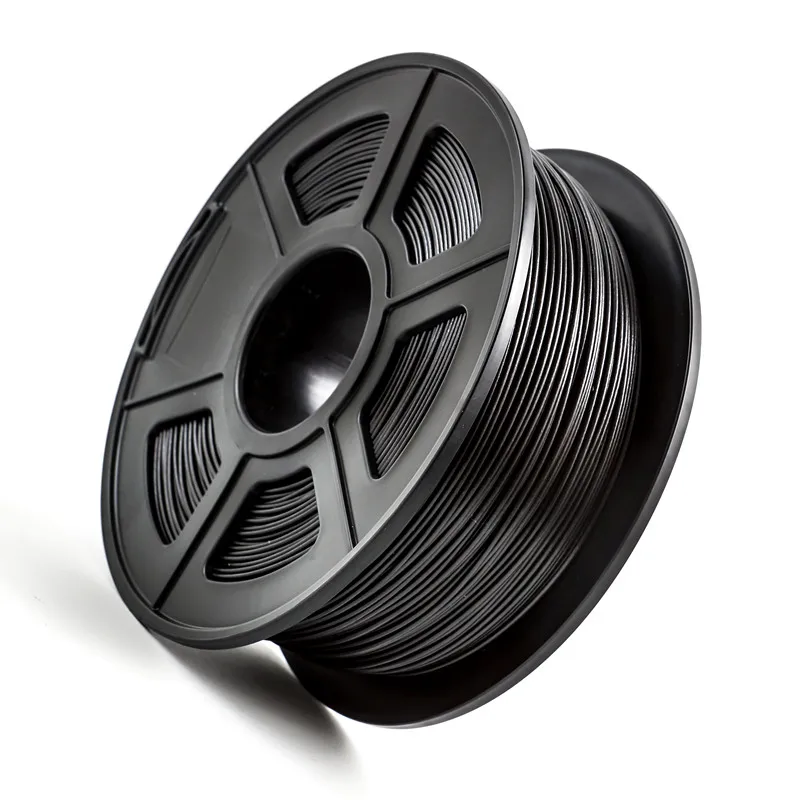
With that being said, it’s quite surprising that a lot of people are oblivious of the health risks associated with 3D printing.
Many users have reported headaches, dizziness and fatigue after spending some time with their printers, only to find out later upon research, that the main cause for their ailing health was the constant exposure.
Five Most Common Filaments & Toxicity
Elucidating the topic additionally, we’ll look into and discuss the 5 most commonly used printing filaments, their composition, and if they mean any peril.
1. PLA
PLA (Polylactic Acid) is a unique thermoplastic filament that is derived from natural resources like sugarcane and corn starch. Being biodegradable, PLA is the go-to choice for printing enthusiasts and experts.
As PLA is the type of filament that melts at a lower temperature, around 190-220°C, it’s less prone to warping and is less resistant to heat.
Although breathing in the fumes of any plastic can’t be good for anyone whatsoever, as compared to the infamous ABS, PLA comes out on top in terms of emission of toxic fumes.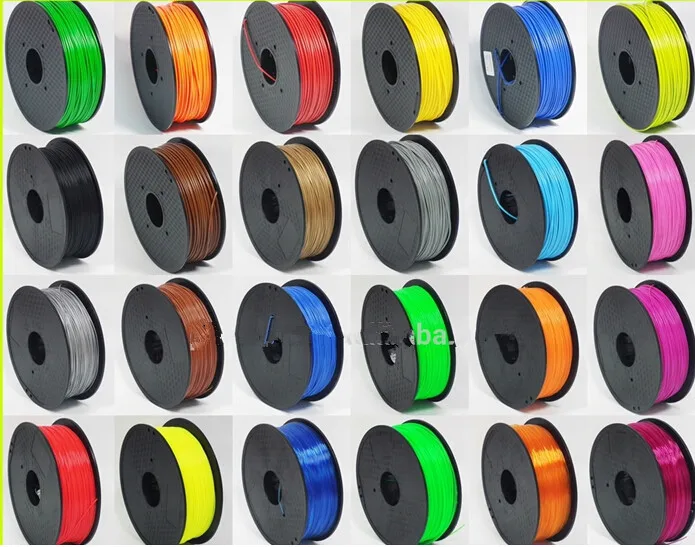 This is mainly because it doesn’t require intense conditions to be extruded out onto the printing bed.
This is mainly because it doesn’t require intense conditions to be extruded out onto the printing bed.
Upon thermal decomposition, it breaks down into lactic acid which is generally harmless.
PLA has been regarded as environment-friendly, although it may be more brittle than ABS and also less tolerable to heat. This means that a hot day in summer with elevated conditions could cause the printed objects to deform and lose shape.
Check out OVERTURE PLA Filament on Amazon.
2. ABS
ABS stands for Acrylonitrile Butadiene Styrene. It is one of the most common printing filaments out there used for forming objects needed to be able to tolerate high temperatures. Although it’s termed as a non-biodegradable plastic, ABS filament is ductile and heat-resistant.
However, ABS with its common use over the years, has started to raise several eyebrows opposed to its safety measures.
Since ABS amounts to melting at very high temperatures, particularly between 210-250°C, it starts emitting fumes that have reported to cause discomfort to users.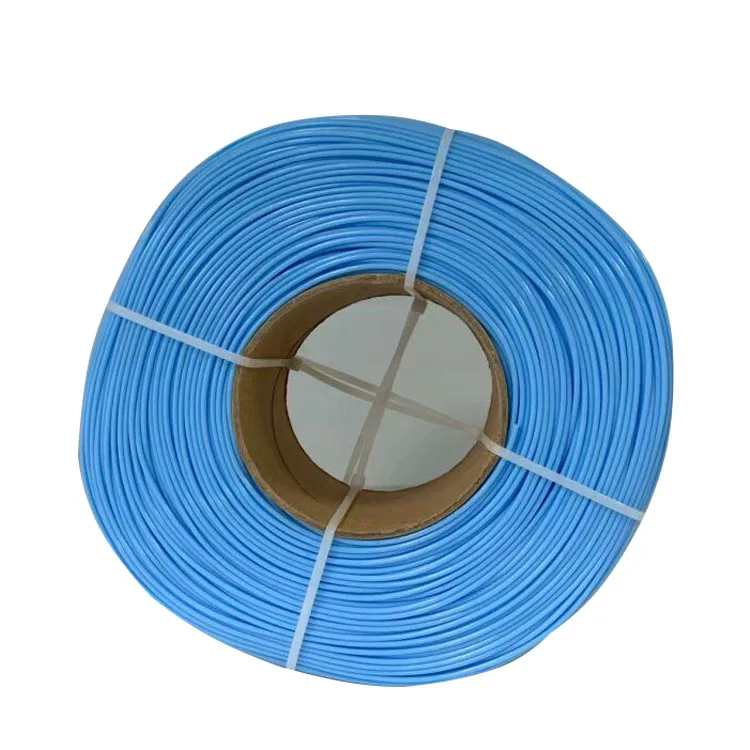
Not only a slight bother, prolonged exposure can cause eye irritation, respiratory problems, headaches and even fatigue.
Check out SUNLU ABS Filament on Amazon.
3. Nylon (Polyamide)
Nylon is a thermoplastic widely known in the printing industry for its prime durability and pliability. It requires heating between 220°C and 250°C to reach optimal performance.
A heated print bed is required for nylon-based filaments to ensure good adhesion and low chances for warping.
Despite Nylon being far stronger than ABS or PLA, an enclosed print chamber is highly necessary to minimize health risks. Nylon is suspected to give off a VOC called Caprolactam which is toxic to inhalation and able to cause grave damage to the respiratory system.
Therefore, constantly working in an environment where the filament is nylon-based is sure to be alarming and precaution is advised.
Check out OVERTURE Nylon Filament on Amazon.
4. Polycarbonate
Polycarbonate (PC) is arguably, one of the strongest printing materials available on the market.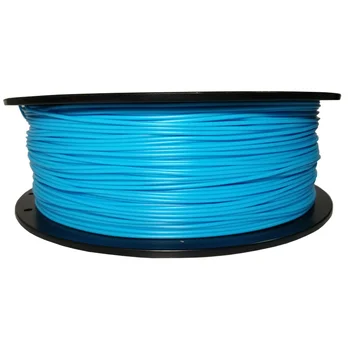 What PLA or ABS lack to offer, Polycarbonate verily provides.
What PLA or ABS lack to offer, Polycarbonate verily provides.
They possess phenomenal physical properties and are on the front lines in the making of heavy-duty objects like bulletproof glass and construction materials.
Polycarbonate has the ability to be bent in any form without cracking or breaking. Moreover, they are extremely resistant to high temperatures.
Nevertheless, having high-temperature tolerance also means that they have increased chances to warp. Therefore, an enclosure over the printer and a preheated platform is a must when printing with PC.
Talking about safety issues, Polycarbonate also emits a considerable number of particles that could do a number on a person’s health. Users have reported that staring at the object being printed with PC too long starts stinging the eyes.
Check out Zhuopu Transparent Polycarbonate Filament on Amazon.
5. PETG
Polyethylene Terephthalate revised with glycolisation has given birth to PETG, a filament on the rise to gaining popularity purely because of its non-polluting properties and high capabilities.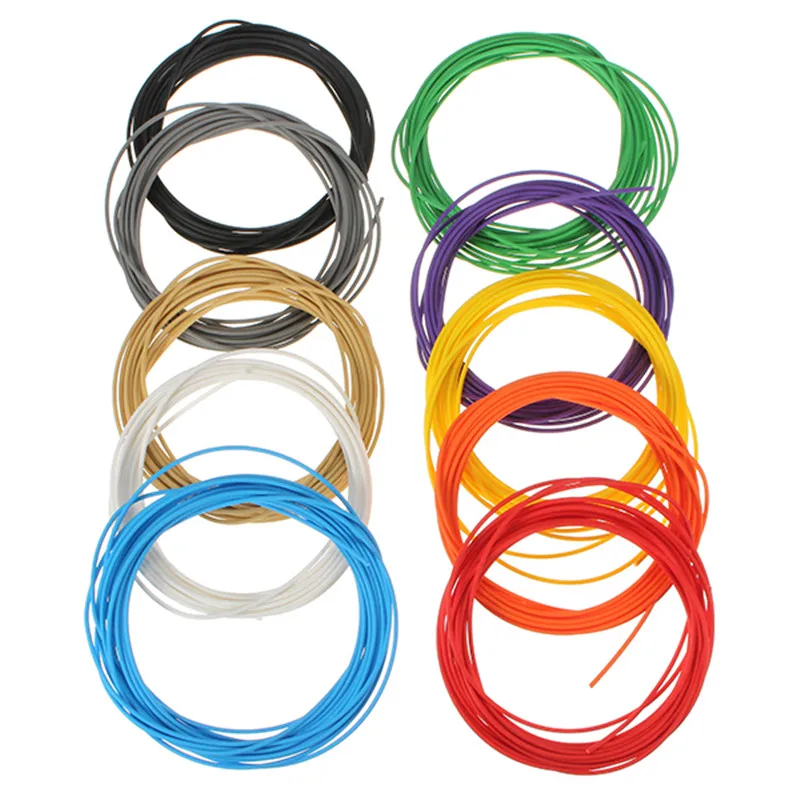
PETG boasts a glossy and smooth finish to the objects, making it highly convenient and a great alternative to PLA and ABS.
Additionally, many PETG users have provided positive feedback that they have experienced little to no warping and the filament makes it easier to adhere to the printing platform as well.
This makes it a huge contender in the marketplace as it is also water-resistant and is commonly used in the manufacture of plastic water bottles.
Check out HATCHBOX PETG Filament on Amazon.
Tips on How to Reduce Toxicity Exposure From Filament
As soon as people are let known about the toxicity of some of the most commonly used filaments, they are all going to ask the same question, “What do I do now?” Fortunately, the precautions aren’t exactly rocket science.
Proper Ventilation
Most printers come with highly specialized carbon filters beforehand to minimize the emission of fumes. Regardless of that, it’s entirely up to us to evaluate and set the correct printing conditions.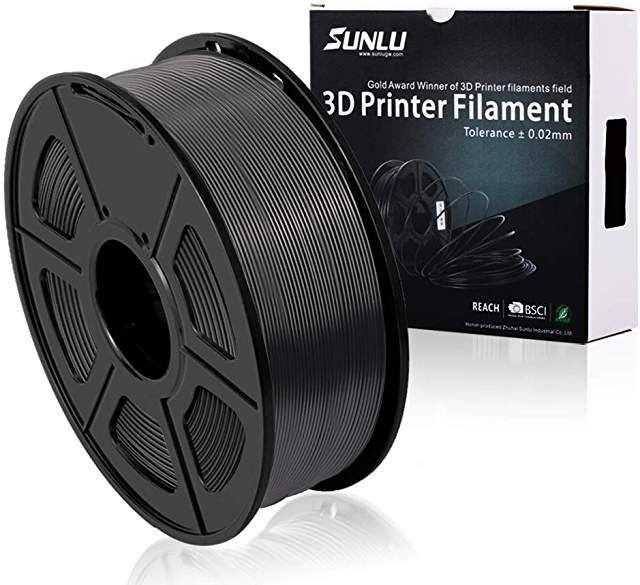
It’s always recommended to print in a place where there is a good ventilation system installed, or somewhere in the open. This helps in filtering the air and expelling the fumes away.
Limiting the Exposure
It’s a good idea making sure that your 3D printer is in an area that people aren’t constantly exposed to. Rather a designated area or room that people don’t have to access to get to a desired area.
The goal here is to limit exposure to the particulates and harmful emissions that come from your 3D printer.
The Dos and Don’ts
The Do’s
- Setting up your 3D printer in a garage
- Using a non-toxic printer filament
- Keeping general awareness of the threat some thermoplastics pose
- Replacing your printer’s carbon-based filter consistently, if any
The Don’ts
- Setting up your 3D printer in your bedroom or living room with poor ventilation
- Not researching thoroughly about the filament you use
- Letting your printer run overnight in the same place where you sleep
What do 3D printers print with?
3D printing is based on the technology of layer-by-layer growth of solid objects from various materials.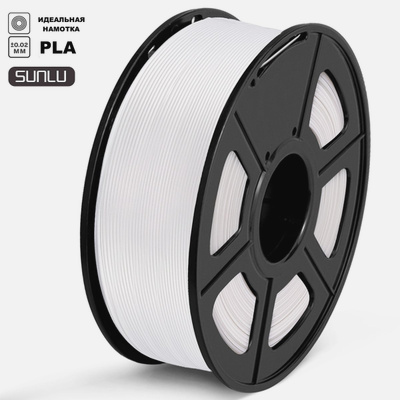 Volumetric models are printed from plastic, concrete, hydrogel, metal, and even living cells and chocolate. In this article, we will provide a brief overview of the most popular 3D printing materials .
Volumetric models are printed from plastic, concrete, hydrogel, metal, and even living cells and chocolate. In this article, we will provide a brief overview of the most popular 3D printing materials .
ABC plastic
ABS plastic is known as acrylonitrile butadiene styrene. This is one of the best consumables for 3D printing. Such plastic is odorless, non-toxic, impact-resistant and elastic. The melting temperature of ABC plastic is from 240°C to 248°C. It is available for retail sale in the form of a powder or thin plastic threads wound on bobbins.
ABS plastic 3D models are durable, but do not tolerate direct sunlight. With the help of such plastic, only opaque models can be obtained.
3D printing ABS resin
Acrylic
Acrylic is used in 3D printing to create transparent models. When using acrylic, the following features must be taken into account: this material requires a higher melting point than ABS plastic, and it cools and hardens very quickly. A lot of small air bubbles appear in heated acrylic, which can cause visual distortions of the finished product.
Products printed with acrylic
Concrete
Test samples of 3D printers for concrete printing are currently being made. These are huge printing devices that painstakingly, layer by layer, “print” construction details and structures from concrete. Such a 3D printer can “print” a residential two-story house with a total area of 230 m2 in just 20 hours.
An improved grade of concrete is used for 3D printing, the formula of which is 95% coincides with the formula of ordinary concrete.
Products printed with concrete
Hydrogel
Scientists from the University of Illinois (USA) printed biorobots 5-10 mm long using a 3D printer and hydrogel. Cardiac tissue cells were placed on the surface of the biorobots, which spread over the hydrogel and began to contract, setting the robot in motion. Such hydrogel robots are capable of moving at a speed of 236 micrometers per second. In the future, they will be launched into the human body to detect and neutralize tumors and toxins, as well as to transport drugs to their destination.
Such hydrogel robots are capable of moving at a speed of 236 micrometers per second. In the future, they will be launched into the human body to detect and neutralize tumors and toxins, as well as to transport drugs to their destination.
3D printed hydrogel biorobots
Paper
Some 3D printers use plain A4 paper as the print media. Since paper is an affordable and inexpensive material, paper models are also inexpensive and accessible to users. Such models are printed in layers, with each subsequent layer of paper cut out by the printer and pasted onto the previous one. Paper models print quickly, but lack durability or aesthetics. They are ideal for rapid prototyping of a computer project.
3D printed paper
Gypsum
Gypsum materials are widely used in modern 3D printing. Models made of gypsum are short-lived, but have a very low cost. Such models are ideal for making objects intended for presentations.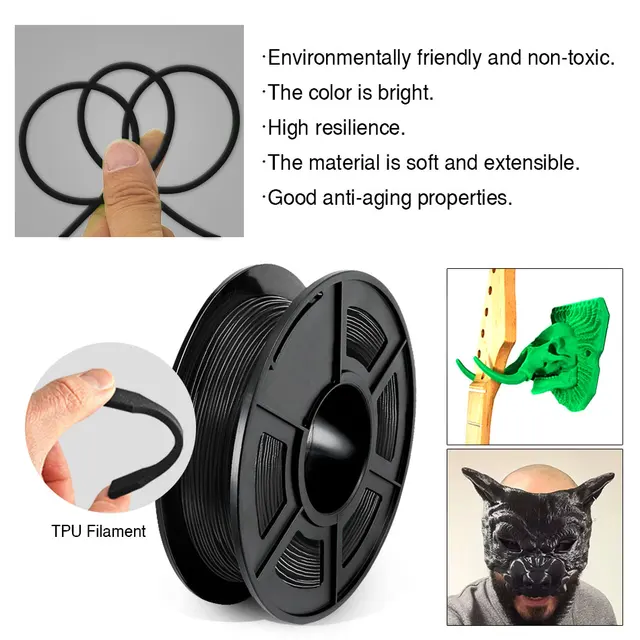 They can be shown as a sample to customers and clients, they will perfectly convey the shape, structure and size of the original product. Since plaster models are highly resistant to heat, they are used as casting samples.
They can be shown as a sample to customers and clients, they will perfectly convey the shape, structure and size of the original product. Since plaster models are highly resistant to heat, they are used as casting samples.
3D printed plaster model
Wood fiber
Inventor Kai Parthi has developed a special wood fiber for 3D printing. The fiber consists of wood and a polymer and is similar in properties to polyactide (PLA). The combined material allows you to get durable and solid models that look like wooden products and have the smell of freshly sawn wood. Currently, the innovative material is only used in self-replicating RepRap printers.
3D printed wood fiber model
Ice
In 2006, two Canadian professors received a grant to develop 3D printing technology for ice figures. For three years, they learned how to create small ice objects using 3D printers.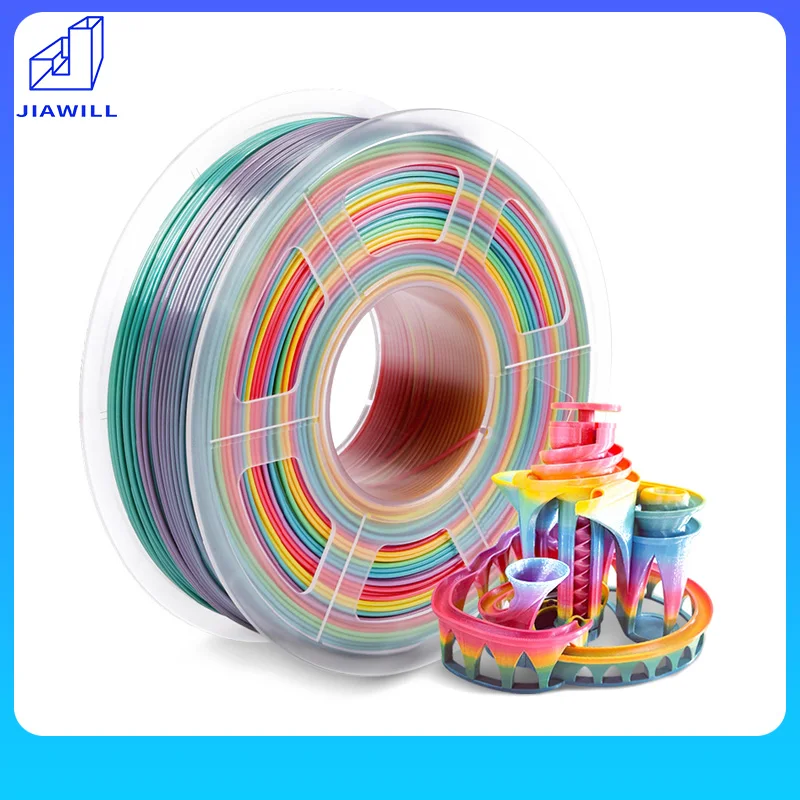 Printing takes place at a temperature of -22°C, water and methyl ether heated to a temperature of 20°C are used as consumables.
Printing takes place at a temperature of -22°C, water and methyl ether heated to a temperature of 20°C are used as consumables.
Ice-printed figure
Metal powder
No plastic can replace metal with its pleasant soft sheen and high strength. Therefore, 3D printing often uses powder from light and precious metals: copper, aluminum, their alloys, as well as gold and silver. However, metal models do not have sufficient chemical resistance and have high thermal conductivity, so fiberglass and ceramic inclusions are added to the metal powder for printing.
3D printed metal powder jewelry
Nylon
Nylon printing has a lot in common with ABS printing. The exceptions are the higher printing temperature (about 320°C), high water absorption capacity, longer curing time, the need to evacuate the extruder due to the toxicity of the nylon components. Nylon is a rather slippery material, for its use it is necessary to equip the extruder with spikes.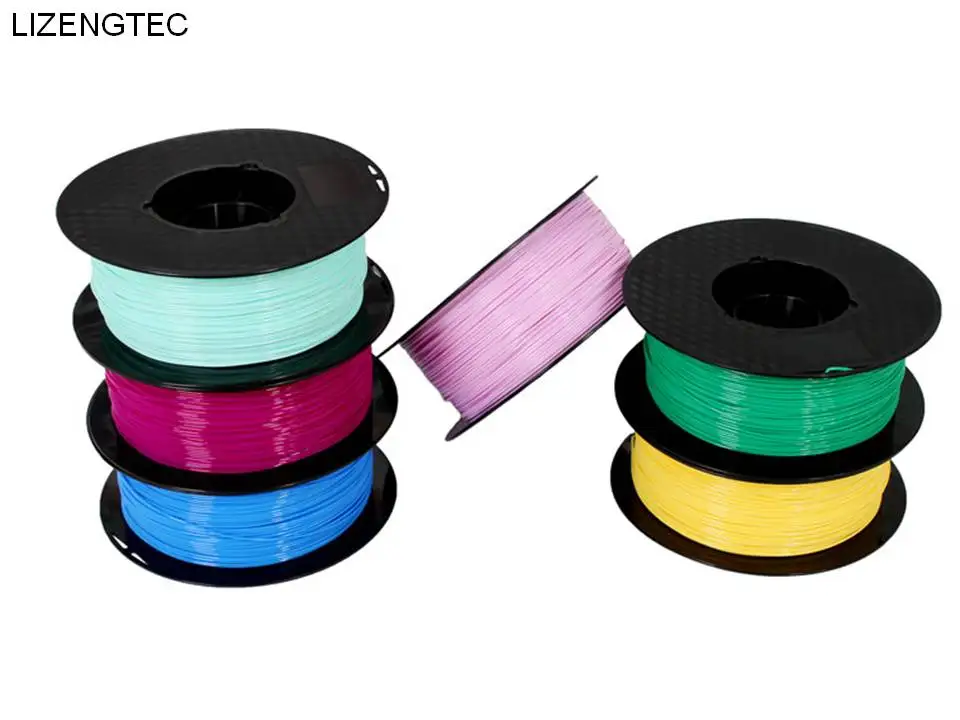 Despite these shortcomings, nylon is successfully used in 3D printing, since parts from this material are not as rigid as those made from ABS plastic, and sliding hinges can be used for them.
Despite these shortcomings, nylon is successfully used in 3D printing, since parts from this material are not as rigid as those made from ABS plastic, and sliding hinges can be used for them.
Nylon thread for 3D print
Nylon products printed by 3D Polycaprolactone (PCL) Polycaprolactone closely close to biodegradable polyester. It is one of the most popular consumables for 3D printing. It has a low melting point, hardens quickly, provides excellent mechanical properties to finished products, easily decomposes in the human body, and is harmless to humans. In addition, it can be used in several 3D printing technologies at once: SLS, ZCorp and FDM. Polycaprolactone for 3D printer Polycarbonate is a hard plastic that is able to maintain its physical properties at extremely high and extremely low temperatures. Polylactide is the most biocompatible and environmentally friendly material for 3D printers. It is made from the remains of biomass, sugar beet or corn silage. Having a lot of positive properties, polylactide has two significant drawbacks. Firstly, the models made from it are short-lived and gradually decompose under the influence of heat and light. Secondly, the production cost of polylactide is very high, which means that the cost of models will be much higher than similar models made from other materials. Used in 3D printing technologies: SLS and FDM. Polylactide filament and 3D printed products with polylactide Polypropylene is the lightest of all plastics in existence today. 3D printing polypropylene This material came to 3D printing from the aircraft industry. It practically does not burn, is characterized by heat resistance, high hardness. It resembles ordinary glass, but surpasses it in strength. Used in 3D printing technologies: SLS and FDM. This is the most common type of plastic in the world, from which PET bottles, canisters, pipes, films, bags, etc. are made. In 3D printing, low-density polyethylene is the unsurpassed leader. This material can be used in any 3D printing technology. 3D printed polyethylene shoes British scientists presented to the public the first chocolate 3D printer that prints any chocolate figures ordered by the operator. Chocolate printer in action There are 3D printers that are designed to print with clay mixtures, lime powder, living organic food, and many amazing materials. One can only guess what materials for 3D printing will be used in the near future. Material extrusion by molten filament layering modeling (FDM) is the most popular polymer 3D printing method, but resins are becoming more and more important for consumers. Resin technologies such as stereolithography (SLA) were previously only used in dental laboratories, engineering departments and manufacturing plants due to the high cost of the equipment. Unlike FDM devices, resin printers use photosensitive liquids to print, curing materials with ultraviolet light. Liquid polymers pose a greater potential health risk than raw materials in fiber form. The toxicity of the resource may put off some users, but printing with resin can be safe if the right algorithm is followed. The word "toxicity" is troubling, but according to the definitions developed by occupational health and safety professionals, any substance that, under certain conditions, can cause harm to health or disease, is "toxic". According to this formulation, many substances around us are potentially dangerous, including perfumes and mattress filling. But are there any particular risks when using liquid resins for 3D printing? The main concern with photopolymer resins is that they can cause skin irritation on contact. Many resins are sensitizers, which means that prolonged exposure sometimes causes a mild allergic reaction. The chemicals that make up most resins are irritants that provoke the appearance of dermatitis - inflammation of the skin due to rejection of foreign elements. The skin quickly absorbs such chemicals, so prolonged contact with the composition or exposure to a large dose can lead to more serious consequences. Another problem with resin 3D printing is air pollution. The material releases fumes, potentially reducing indoor air quality (IQA). Poor IQA scores can lead to headaches, fatigue, or more serious reactions such as breathing problems. These effects are due to volatile organic compounds (VOCs) and other small particles that cause an inflammatory response in the airways, leading to swelling or tenderness. Long-term effects from working with liquid polymer are rare but significant: On the other hand, most resins on the market do not pose a significant hazard. Companies that produce such materials must comply with government standards and additional recommendations ISO 9001. Regulations ensure that chemicals produced by businesses are minimally harmful. However, some hazardous elements, such as asphalt fumes and synthetic mineral fibers used in fiberglass, are still widely used and over half a million workers are exposed to them. Manufacturers usually provide Material Safety Data Sheets (MSDS) that list any potential health concerns. Some compounds may be more dangerous than others for certain people. If a person does not know if they are allergic to any materials, they should act as if they are and handle the product with care. Several government agencies have conducted research on the safety of epoxy 3D printing. They all showed that long-term emissions from printing are mostly negligible, although risks exist if proper precautions are not taken. Since studies have found traces of hazardous substances when working with resin formulations, safety regulations must be observed. 3D printing resins are not as scary as they seem, but they still need to be handled with care. First of all, direct contact of the mass liquid with any part of the body must be avoided. Safety goggles and nitrile or latex gloves should always be worn to prevent toxins from getting into the eyes or onto the skin. Polycarbonate (PC)
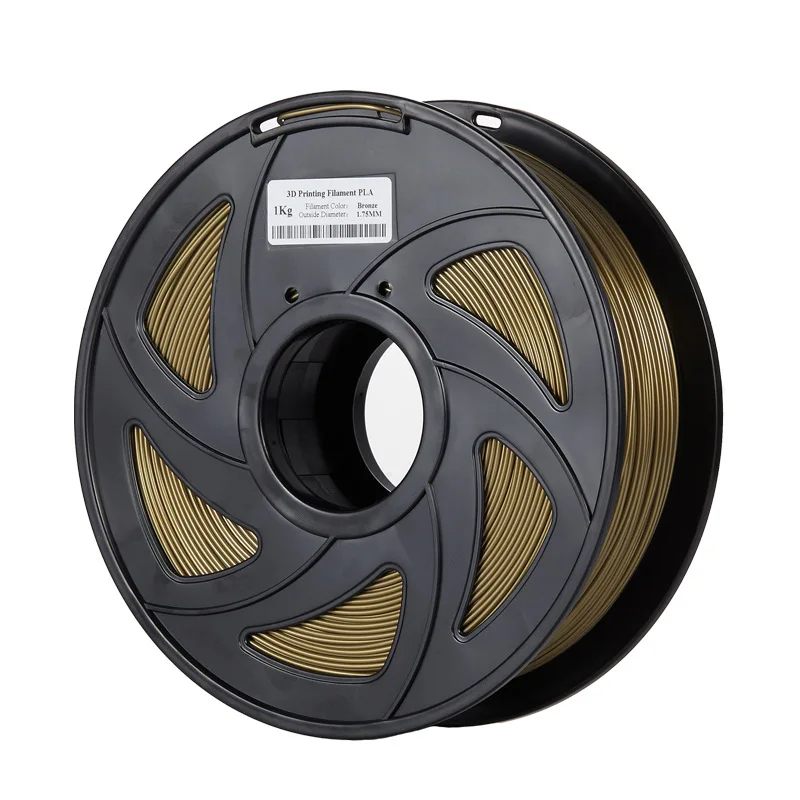 It has high opacity, has a high melting point, and is suitable for extrusion processing. At the same time, its synthesis is associated with a number of difficulties and is not environmentally friendly. Used to print heavy duty models in several 3D printing technologies: SLS, LOM and FDM.
It has high opacity, has a high melting point, and is suitable for extrusion processing. At the same time, its synthesis is associated with a number of difficulties and is not environmentally friendly. Used to print heavy duty models in several 3D printing technologies: SLS, LOM and FDM. Polylactide (PLA)
Polypropylene (PP)
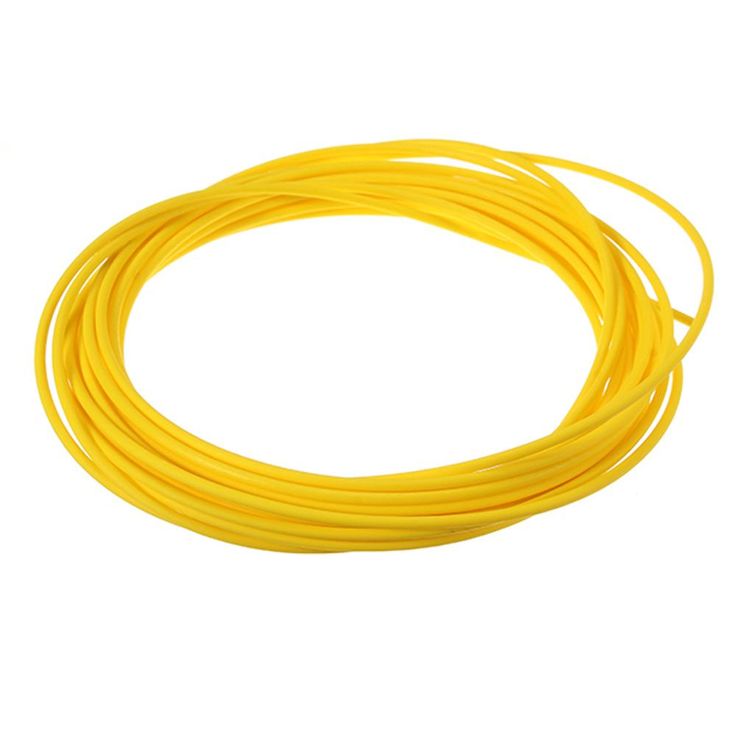 Compared to HDPE, it melts worse and resists abrasion better. At the same time, it is vulnerable to active oxygen and deforms at low temperatures.
Compared to HDPE, it melts worse and resists abrasion better. At the same time, it is vulnerable to active oxygen and deforms at low temperatures. Polyphenylsulfone (PPSU)
High density polyethylene (HDPE)
Chocolate
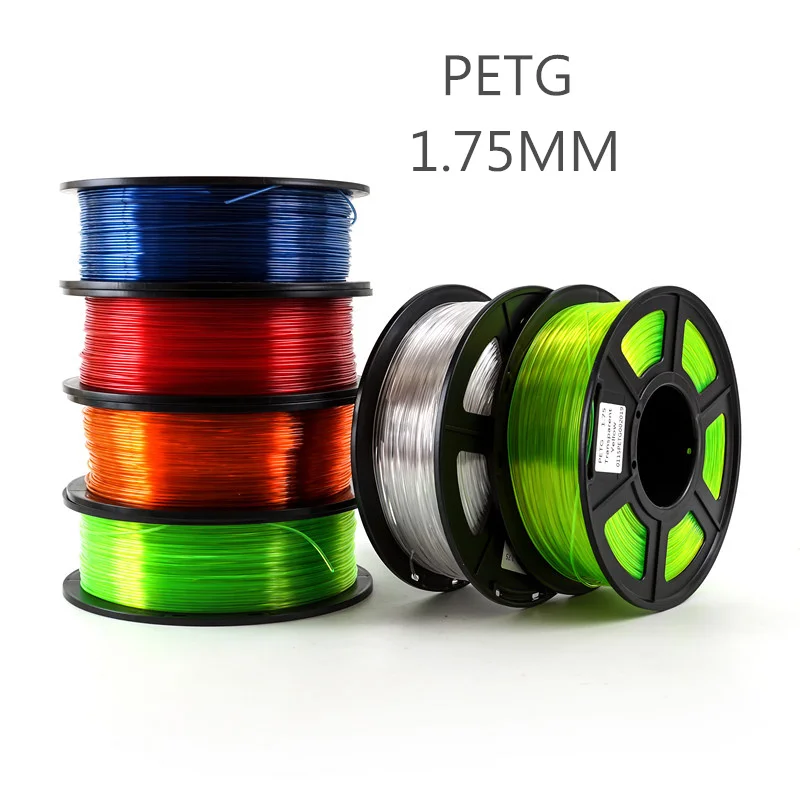 The printer applies each next layer of chocolate on top of the previous one. Due to the ability of chocolate to quickly solidify and harden when cooled, the printing process is quite fast. In the near future, such printers will be in demand in confectionery and restaurants.
The printer applies each next layer of chocolate on top of the previous one. Due to the ability of chocolate to quickly solidify and harden when cooled, the printing process is quite fast. In the near future, such printers will be in demand in confectionery and restaurants. Other materials
How safe are 3D printing resins?
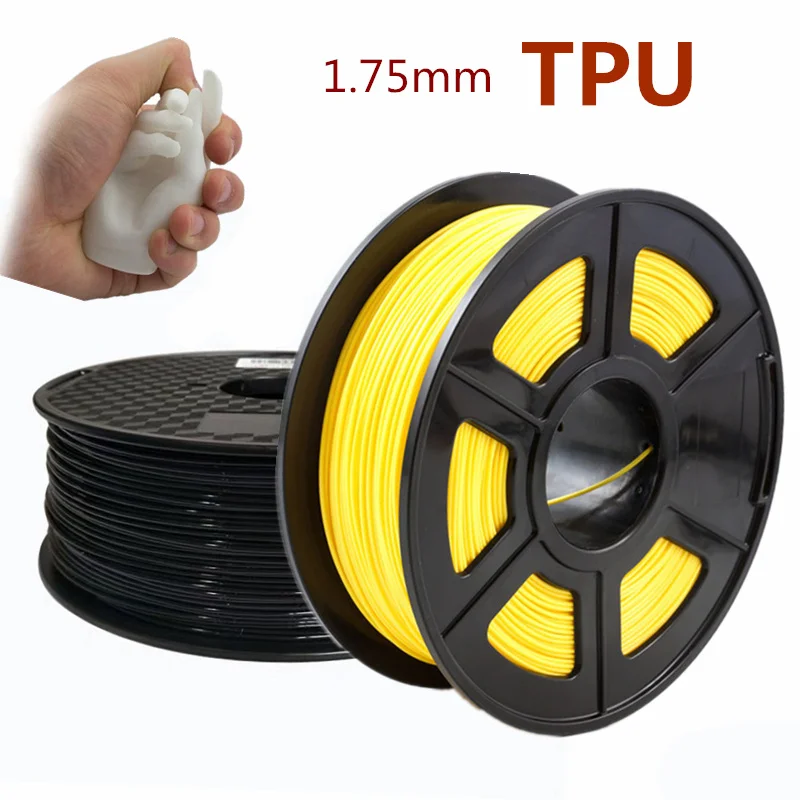 Now that machines have become more affordable, more and more ordinary users are using SLA technology, which calls into question their safety.
Now that machines have become more affordable, more and more ordinary users are using SLA technology, which calls into question their safety. What are the Potential Risks of Resins
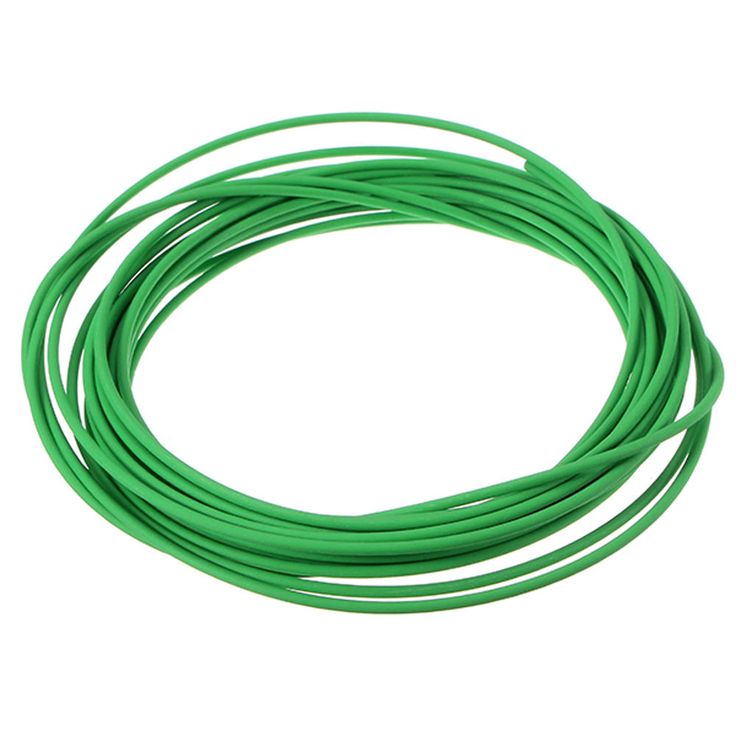 In some cases, contact of the substance with unprotected skin results in burns and blisters, which may require medical attention. If the materials come into contact with the eyes, they will cause irreparable damage.
In some cases, contact of the substance with unprotected skin results in burns and blisters, which may require medical attention. If the materials come into contact with the eyes, they will cause irreparable damage. 
• If the vapors are inhaled for a long time, chronic diseases of the respiratory system may appear.
• Some of the VOCs emitted by resins are suspected to be carcinogens, so they are likely to cause cancer after prolonged exposure.
• Constant physical contact can lead to severe allergies. Standards and manufacturer's instructions
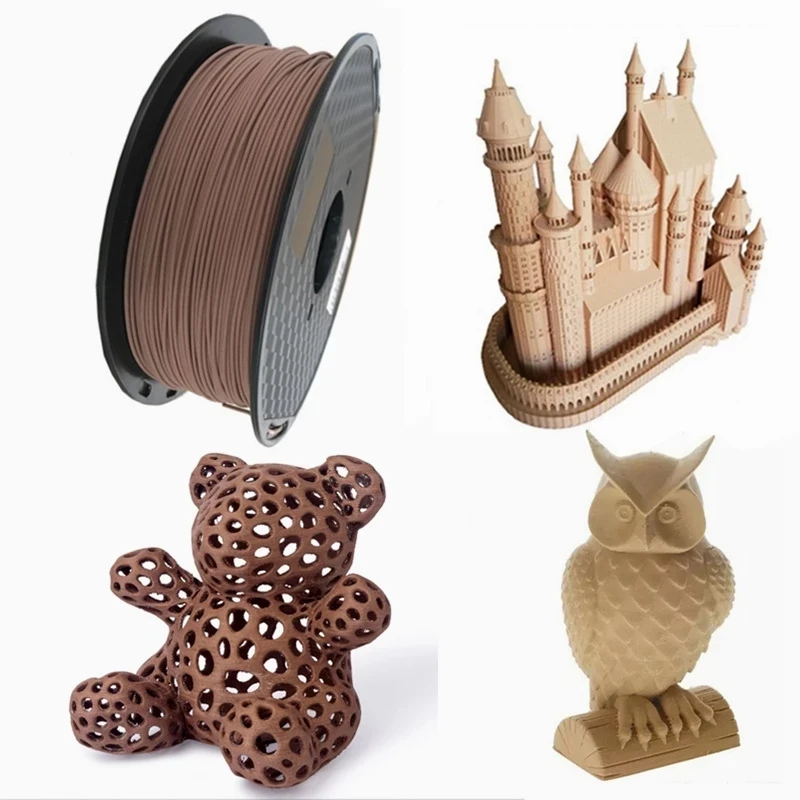 For example, corneal burns from overexposure to the eyes, or nausea and vomiting if swallowed. All these documents are provided in order to provide users with maximum safety when using consumables.
For example, corneal burns from overexposure to the eyes, or nausea and vomiting if swallowed. All these documents are provided in order to provide users with maximum safety when using consumables. Safety Steps
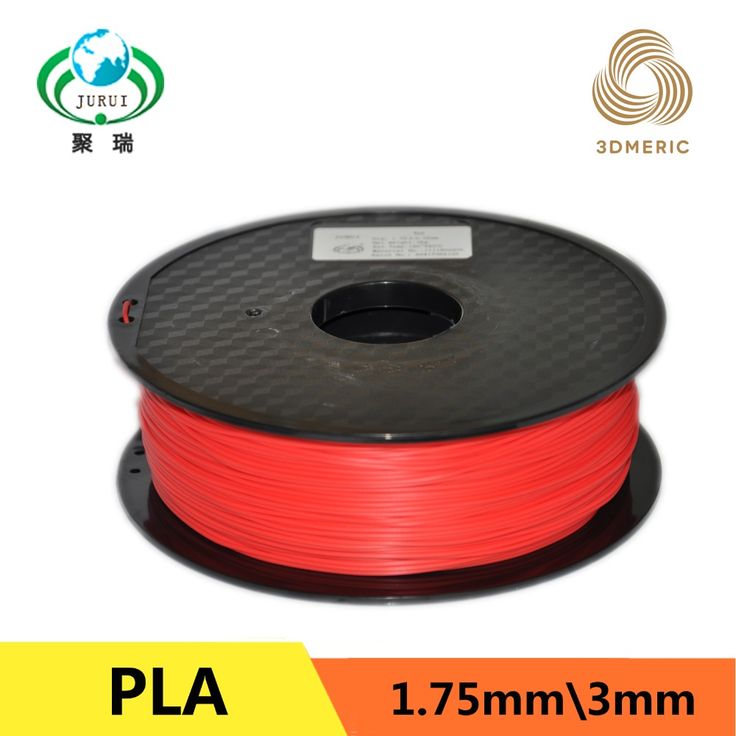
Learn more




